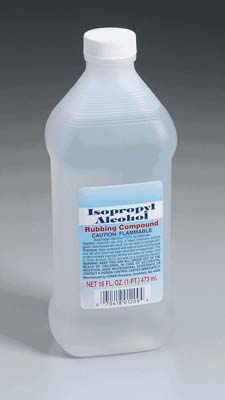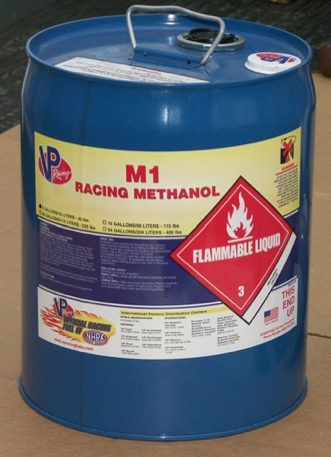| What's Hot! | Products/ Tools | EFI Tuning | Basic Tuning | Advanced Tuning | Chassis Tuning | Advertise with us |
The Basics of Water Meth Injection
Contributed By: bniceO1
116+ Octane With Water Injection!
For many of you reading this, you may are already be familiar with the octane increases possible with a simple water/alcohol injection system (the word alcohol referring to all common types of alcohols used such as methanol, ethanol, isopropanol, etc.). While for many others, you are just becoming aware of it for the first time and what it has to offer.
History
Water injection actually dates far back to the 1930’s. It was extensively used for the first time in WWII on supercharged and turbocharged fighter aircraft to increase power on take off and increasing the altitude for which a plane could climb. In 1942, the German Luftwaffe increased the horsepower of the Focke-Wulf 190D-9 fighter aircraft from 1776HP to 2240HP using 50/50% water/methanol injection. Manufactures such as Chrysler, Saab, Porsche and GM also used water injection on various large displacement, high compression or turbo charged motors such as the Saab 99 Turbo and the turbo Corvair by GM in the 1960’s. It was also used in Formula 1 racing for a short period of time before being banned for adding to much horsepower.

Turbo Corvair by GM
In recent years, water/alcohol injection has become ever more popular and recognized as an invaluable tool for both forced induction and naturally aspirated performance engines. While often times referred to as a “chemical intercooler” it is more commonly used in forced induction applications due to it’s substantial cooling effects. Reducing air intake charge temperatures by 50-200+ degrees F almost instantly. Providing a substantially cooler denser air charge and greater expansion of power with in the combustion chamber. While also largely eliminating the problem of engine “knocking” and allowing user to run higher levels of boost, compression and timing.
As mentioned already. Water/alcohol injection has also become a tried-and-true proven way for users to effectively increase their 87-93 octane pump gas. Depending on the amount injected, gains up to 10-20+ points in octane can be achieved. Thus, making 91 octane pump gas act like 105-116 octane racing fuel in their engines. Thereby eliminating our dependency for notoriously expensive racing fuels, which can cost upwards of $12.00-$15.00 per gallon, as so many of us have reluctantly had to use in the past. Costing only pennies to operate when using 100% water, its also a far more effective, affordable and convenient of a solution to those expensive octane booster fuel additives as well.
While once believed impossible several years ago. It is now possible and becoming quite common to find individuals using 91-93 octane combined with water/alcohol injection to support engines well over 1000+ horsepower. One top engine builder in the industry has already made upwards of 1700+ horsepower with a ProCharged carbureted big block Chevrolet on 93-pump gas using 100% water injection. Below is a brief summery of the various types of fluids you can use with our water/alcohol injection systems (http://www.alcoholinjectionsystems.com/index.html).
What types of fluids can I use?
Water and various grains of alcohol are the primary fluids, which are commonly used in a water/alcohol injection system. Unlike many other competitors systems on the market, which can only tolerate mixtures up to 50/50 mix of any form of alcohol, our system is completely compatible with 100% methanol, ethanol, isopropanol and other forms of alcohol. Depending on the application, we have found mixtures between 100% water and blends up to 50/50 mix to perform the best.


This surprises many the first time they hear it. Water and water alone, is a remarkable detonation suppressant when injected properly into the air charge. The most notable advantages of using water injection is the substantial cooling effect it has on air charge temperatures, cylinder temperatures and it’s inability to detonate. Water has a high latent heat of vaporization. Approximately, 8 times that of gasoline and can reduce intake charge temperatures by 50-250+ degrees F on supercharged and turbocharged engines almost instantly when sprayed properly. It’s also an extremely effective octane booster. As you may have already read in our article, “Knock Knock…Who’s There?”. (http://www.alcoholinjectionsystems.com/a10/Knock-Knock.-Who-is-the-there...-Detonation!/article_info.html) Since water does not burn “per‘ say, when atomized properly with pump gas, it will effectively increase the fuels octane. Doing so, by improving the fuels ability to resist self-ignition under higher cylinder pressures and hotter cylinder temperatures thus suppressing detonation.
Through testing and research, comparing high-octane fuels vs. 87-93 octane pump gas combined with 100% water injection (no alcohol mix added). Depending on the build of the motor and volume injected, we estimate octane increases of 10-20+ points can be achieved by using 100% water injection with 87-93 octane gas. This is after evaluating maximum allowable total timing advance and maximum attainable boost levels with out detonation or pre-ignition.
Methanol, ethanol and isopropanol, all forms of alcohol, also can be used with water injection systems. With octane ratings from 105-130+, depending on the form of alcohol used, 10-25+ points in octane can be achieved when combined properly with 87-93 octane pump gas. The most common types of alcohol used in water/alcohol injection systems are methanol grains. Methanol is produced primarily from natural gas, wood or coal. While ethanol is produced from sugarcane or corn. Methanol is far cheaper to produce than ethanol, thereby making it the more desirable between the two to use. Water injection is also often known aswater/methanol injection (http://www.alcoholinjectionsystems.com/p101/Stage-1-Adjust.-Boost-Activated-Trunk-Mount-Water-Methanol/Alcohol/product_info.html), owing to the fact that the alcohol mixed into the injection solution is often methanol and not ethanol or isopropanol.
The main distinction between methanol and ethanol is that methanol has a lower caloric weight (or the amount of energy available to burn when combusted), higher specific heat (takes more heat to burn the mixture) and a high heat of vaporization (when vaporized can cool down intake air temps dramatically). Ethanol is generally the same characteristics and properties as methanol, but does not cool down the intake charge as well and as mentioned above costs substantially more then methanol.
For engines that are fueled solely by methanol, such as race engines, it’s quite common to see ice form on the outside of the intake manifolds during operation. Methanol is able to cool down the intake air temperatures entering the cylinder head so well, that when used as the primary fuel on a forced induction engines, an intercooler is not needed no matter what the boost levels are. Most surprisingly, engines can also be ran without a radiator. This being a true testament to the cooling effects offered by methanol.
It should be noted that while water/alcohol injection can be extremely beneficial to both naturally aspirated and forced induction applications, proper installation, delivery, control and tuning are imperative. Not all water/alcohol injection systems are the same. Alcohol Injection AlcoholInjectionSystems.com (http://systems.com/) brings you the best quality and most advance systems in the industry. Along with the easiest to install systems on the market.
**Tuning Tip**
Since alcohol is a fuel, when using mixes with higher percentages of alcohol, expect air/fuel ratio to richen up more then when used with mixes containing lesser percentages of alcohol with greater percentages of water. For this reason, many user’s will actually prefer using a much lower percentage of water/alcohol or 100% water. Depending on the application this can be just as effective while not affecting the air/fuel ratio as greatly as does mixes with greater percentages of alcohol. I highly recommend the use of a wide band to monitor air/fuel ratio and aid in tuning your engine.
Complete water/meth kits can be purchased as well for easy set-up. Check out a few of our favorites:
***Remember*** to check for other relevant information in the columns and article tables.
ATTENTION READER:
If you enjoyed the information and article you just read be sure to check out our newly released book with even more exciting photo's and information:How to Turbocharge and Tune your Engine

Want to know more about your particular Make and Model vehicle? All of these vehicles are covered in the tech, maintenance and repair articles found above. Enginebasics is the wiki or wikipedia of car part, repair, how to and tuning information. Let us be the class 101 for your automotive learning.
| Ford | General Motors GM | Pontiac | Jaguar | Land Rover | Nissan |
| Toyota | Honda | Lexus | Acura | Lotus | Scion |
| Infinity | BMW | Mercedes | Mitsubishi | Ferrari | Maserati |
| Lamborghini | Volks Wagen VW | Saab | Audi | Hyundai | Kia |
| Subaru | Mazda | Chevy | Volvo | Caddilac | Dodge |
| Chrylser | Daewoo | Porsche | Mercury | Freightliner | MG |
Individual Models
| Ford Mustang | Mitsubishi Eclipse | Mitsubishi Evo | Subaru WRX / STI | Dodge Viper | Chevrolet Corvette |
| Nissan Skyline | Honda S2000 | Nissan 350z | Toyota Supra | Chevy Camaro | Lotus Elise Exige |
| Honda Civic | VW Golf | Dodge SRT-4 | Eagle Talon | Acura Integra | BMW M3 |
| Nissan 240sx | Porsche 911 | Acura NSX | Honda Accord | Toyota Camry | Toyota MR2 |
| VW R32 | Dodge Truck | Mazda Rx7 | VW Jetta | Sand Buggy | Nissan Sentra |
For the latest Automotive news and stories visit the websites below |
Our feature Build: An AWD V6 Civic




